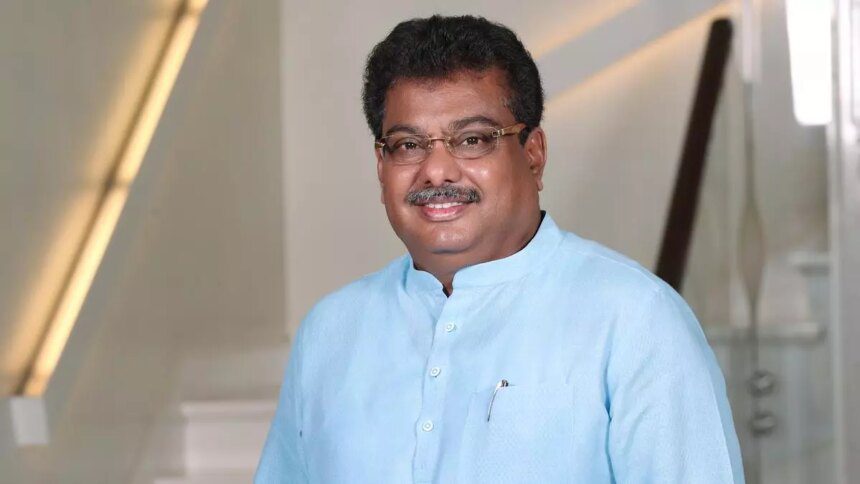Ahead of the Global Investor Meet (GIM) 2025, Karnataka’s Minister for Large and Medium Industries and Infrastructure Development, MB Patil, discusses the upcoming event, the state’s appeal to global investors, and notable local projects, including the construction of a second airport in Bengaluru.
### How is GIM 2025 different from previous editions?
GIM 2025 is set to introduce key features inspired by the World Economic Forum in Davos, making it more dynamic and impactful. A standout initiative is SME Connect, which aims to train over 2,000 small and medium enterprises (SMEs) in Industry 4.0 technologies, preparing them for digital transformation and increased productivity.
Another noteworthy initiative is Venturise, which addresses sector-specific challenges in aerospace, renewable energy, and Electronics System Design & Manufacturing (ESDM). The Karnataka Government has shortlisted 48 start-ups in these fields, granting them a prize of $300,000, along with opportunities for exclusive interactions with venture capitalists, private equity firms, and potential clients. Additionally, GIM 2025 will host over 30 sessions covering various industry topics, including KWIN City discussions, with participation from 19 countries, thereby enhancing international collaboration.
Karnataka has established itself as a leading player in the aerospace and defense sectors, contributing to 65% of India’s output in this area. The state is also making strides in machine tools manufacturing and is venturing into emerging industries such as semiconductors, electric vehicles (EVs), pharmaceuticals, renewable energy, and artificial intelligence.
There is strong interest from semiconductor startups and niche players in Karnataka, with plans for a semiconductor plant akin to Micron’s. The EV sector is also being nurtured with the development of a dedicated EV cluster, while a comprehensive pharma park is being constructed in Kolar.
### What achievements have been made with MOUs from 2022? What investments have been realized so far?
Excluding green hydrogen projects, the realization rate from prior memorandums of understanding (MoUs) stands at 50-60%. One challenge encountered was the infrastructure readiness for green hydrogen projects. Despite signing MoUs totaling ₹2,40,000 crore in this sector over the past few years, only two projects have been feasible due to the absence of necessary infrastructure.
We are now adopting a more strategic approach, ensuring that investment commitments align with Karnataka’s infrastructure capabilities to guarantee that the projects we attract are both feasible and impactful.
To date, we have confirmed investments of ₹7 lakh crore and are actively pursuing an additional ₹3 lakh crore, bringing the total anticipated investment to ₹10 lakh crore. We are focused on ensuring that signed MoUs convert into actual investments, aiming for at least ₹7 lakh crore to materialize. Thus, we expect that out of the total ₹10 lakh crore, at least ₹7 lakh crore should come to fruition.
### With discussions around Tier II cities in the Union Budget, what is the potential for growth outside Bengaluru?
While urban Bengaluru is attractive, it currently lacks incentives in its district policy, apart from a few high-tech industries. Conversely, other regions benefit significantly from targeted incentives dependent on sector focus. For instance, Mysuru is being developed as a hub for electronics, medical equipment, maintenance companies, and semiconductors, while Tumakuru is focusing on machine tools. Battery manufacturing is expanding in Kolar and Vijayanagar, with FMCG parks emerging in Dharwad and Bijapur. Belagavi is home to a private aerospace park established by Aequs, and Chitradurga is set to become a drone park.
Raichur and Kalaburagi are gaining traction as textile hubs, capitalizing on local cotton production and opportunities shifting from Bangladesh. The government is also considering the Nanjundappa Report to stimulate development in underdeveloped districts, with plans for electronics parks in Bengaluru and start-up parks in Mysuru, Bengaluru, Hubballi, and Belagavi.
We will implement employment-based incentives under our industry policy, where incentives rise with the number of employees. Companies that hire a larger number of women will also qualify for additional incentives.
### What is the current status of the second airport and HAL airport projects?
While I am unable to disclose full details at this moment, we are actively progressing on these projects. I will have further discussions with the Chief Minister before submitting the proposal for approval.
It is expected that HAL Airport will resume operations by 2033, once the current exclusivity and preferential clauses expire. However, HAL’s capacity is limited, accommodating only 3 to 5 million passengers annually, while Bengaluru’s demand necessitates a facility capable of handling 100 million passengers. Kempegowda International Airport (BIAL) is engineered to support that scale, and the proposed second airport will similarly be constructed to meet these requirements.
Although HAL may continue to serve regional and domestic routes for inter-Karnataka flights utilizing ATR aircraft, Bengaluru needs a second airport comparable in scale to BIAL.
### What developments are taking place concerning the KWIN City project?
KWIN City is envisioned as a research park centered on knowledge, well-being, and innovation. Three decades ago, Karnataka attracted many international students due to its fewer colleges compared to states like Maharashtra, Tamil Nadu, Andhra Pradesh, and Northern India, which have since caught up in terms of higher education institutions. It is now imperative for Karnataka to advance to the next level.
With foreign universities now looking to establish campuses in India, we are poised to capitalize on this opportunity. We plan to welcome these institutions, while also developing our own universities, research centers, and innovation hubs.
In the coming six months, we will initiate the first phase of KWIN City’s development. There is considerable interest from the community, and we aim to elevate it further. Bengaluru’s advantage of having numerous professional colleges will continue alongside established institutions like the Manipal group.
In the healthcare sector, we are home to prominent institutions such as Narayana Hrudayalaya and Nethralaya, and we see potential for growth in medical tourism and research as emerging sectors within the region.
Published on February 7, 2025.










